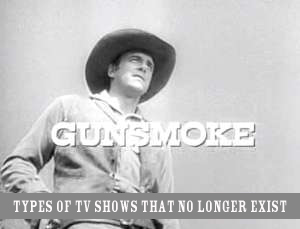When we ran a piece earlier this month about TV genres that have all but disappeared from the tube, you gave us some great suggestions for another look at some fading television institutions.

Anthologies. This format dominated early TV, because they were cheap to produce, and they were easy to produce. TV producers were still figuring out what made a good TV show in the 1950s, so many early broadcasts were presented like stage plays: a single set in a studio and little camera movement. Many episodes of anthologies like The U.S. Steel Hour and The Philco Television Playhouse originated as plays, or were written by playwrights, because the TV industry at the time was based in New York, which gave it access to Broadway’s talent pool. (It’s also what the audience wanted—the first TV set buyers in the 1940s and early ’50s were wealthier Americans who research showed like more refined entertainments, such as theater.) Into the ’60s, anthologies evolved into big-budget, filmed productions, particularly The Twilight Zone and The Outer Limits. But as TV found its way, the audience responded—by and large, it preferred sitcoms and dramas with regular characters and continuing stories. One notable anthology revival: NBC’s Amazing Stories (1985), cancelled after two seasons of middling ratings.
Local kids shows. From the late 1940s to the early 1970s, nearly every American city had its own local kid’s show. The format was pretty standard: a cowboy/clown/pirate/train engineer/mailman/ringmaster introduced games, contests, puppet shows, and cartoons. At the height of the era, there were more than 1,400 locally made kids’ shows nationwide—the shows were a cheap and easy way for stations to fill time in little-watched early-morning and late-afternoon hours. The advent of PBS’s all-educational children’s programming killed the cowboys and clowns. Concerned parents urged their kids to watch “educational” shows, such as Mr. Rogers’ Neighborhood, Sesame Street, and The Electric Company, instead.








